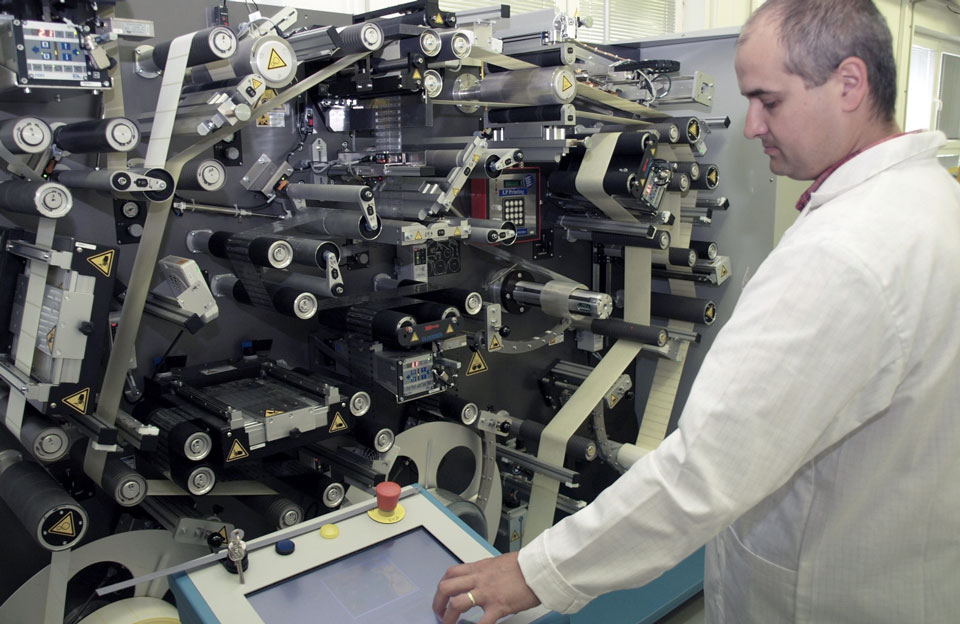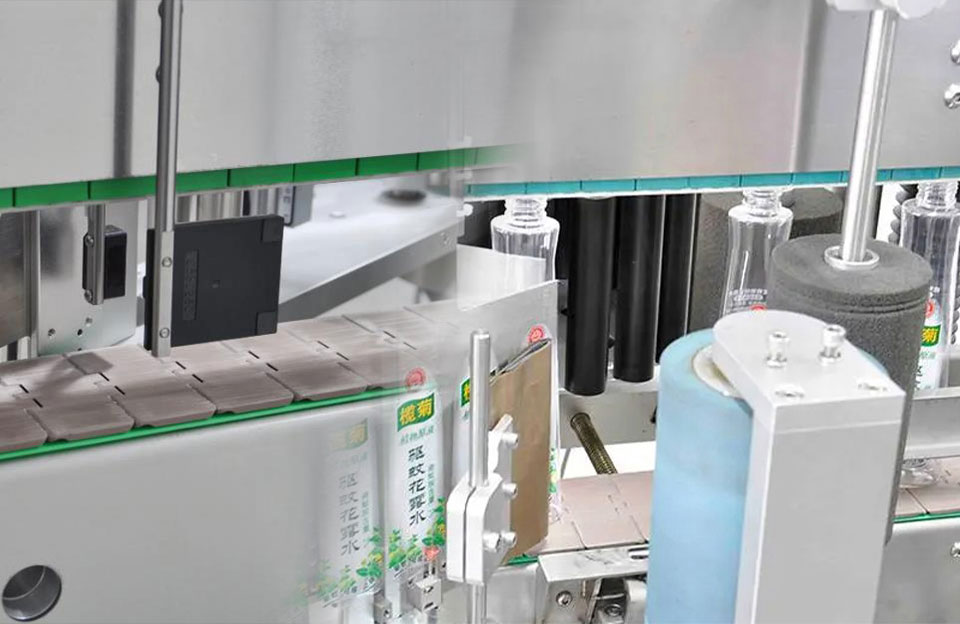RFID (Radio Frequency Identification) stands for Radio Frequency Identification and consists of two main components: RFID tags and RFID readers. The labeling machine uses RFID technology to enhance the labeling process.
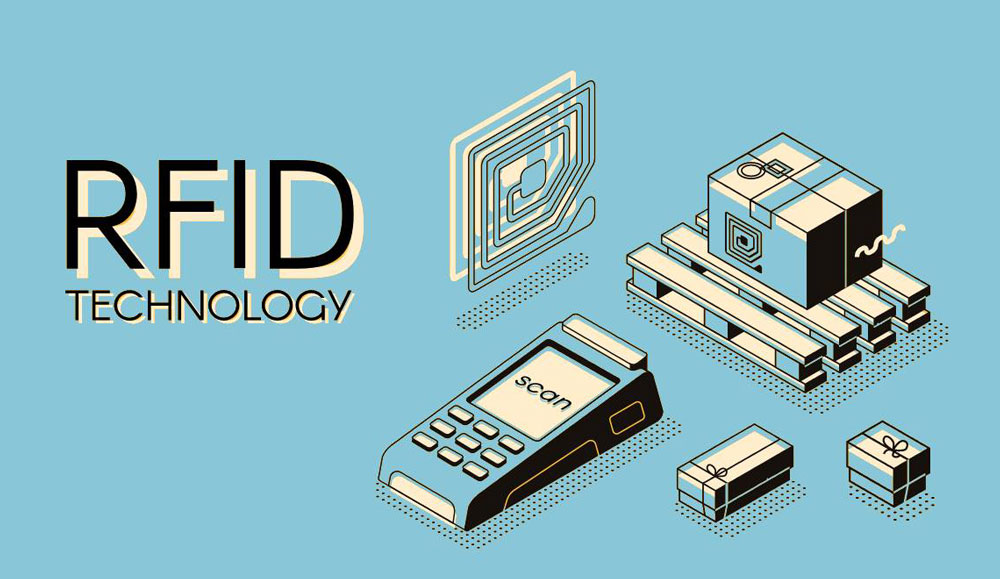
An RFID labeling machine is an advanced piece of industrial equipment designed to apply RFID tags or tags to products, goods, or packaging. RFID technology allows automatic identification and tracking of items using radio frequency signals, making it a powerful tool for inventory management, supply chain optimization, and anti-counterfeiting measures across industries. The RFID labeling machine seamlessly integrates RFID technology into the labeling process to achieve efficient and accurate labeling of items.
What is RFID
RFID, which stands for Radio Frequency Identification, is a technology that uses radio waves to identify and track objects or items.
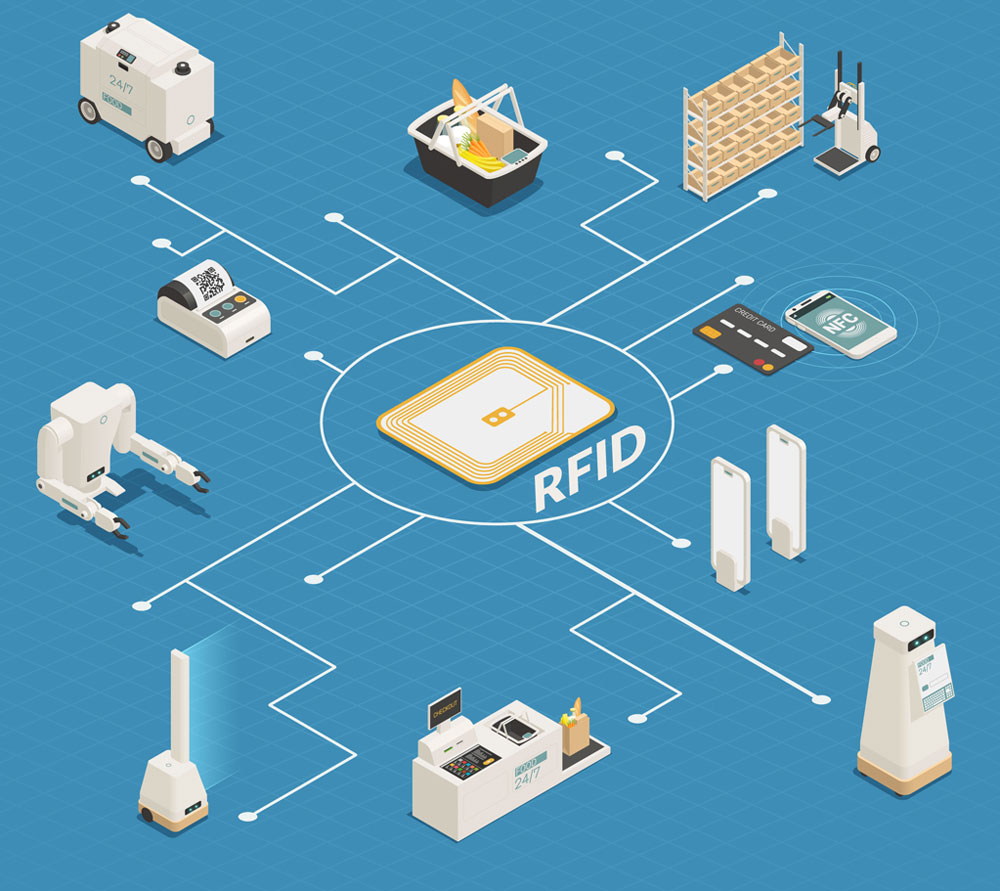
An RFID system has two main components: an RFID tag (transponder) and an RFID reader (interrogator).
- RFID Tag: An RFID tag is a small electronic device that contains a microchip and an antenna. The microchip stores the data, and the antenna allows the tag to communicate with the RFID reader via radio waves. RFID tags come in many forms, such as stickers, cards, key fobs, and even embedded in products or packaging.
• Passive RFID tags: Passive RFID tags have no built-in power source and rely on the energy transmitted by the RFID reader to activate and transmit data. They are widely used in applications such as inventory management and access control.
• Active RFID tags: Active tags have their power source (usually a battery), have a longer read range, can transmit data without relying on the reader’s energy, and are often used to track high-value assets or applications that require real-time data.
• Semi-passive (battery-assisted) RFID tags: Semi-passive tags use a small battery to power the chip, while communication with the reader remains passive. Semi-passive RFID tags allow for greater read range and faster response times than passive tags. - RFID Reader: An RFID reader is a device that emits radio waves and captures data from RFID tags within its reading range. When an RFID tag enters the reader’s read area, it receives power from the reader and responds by transmitting its data back to the reader.
• Fixed RFID Readers: Fixed readers are commonly used in access control, warehouse inventory management, and toll systems applications.
• Handheld RFID Readers: Portable readers that allow users to move and manually scan RFID tags, commonly used for inventory audits and asset tracking in various industries.
• Integrated RFID Readers: Integrated RFID readers are built into other devices such as smartphones, tablets, or industrial machinery, allowing them to read RFID tags without additional specialized hardware.
RFID technology offers several advantages over traditional barcode systems:
- Non-contact reading: RFID tags can be read without direct line of sight or physical contact, making the reading process faster and more convenient.
- Multiple Tag Reading: An RFID reader can read multiple tags simultaneously to efficiently and quickly identify multiple items.
- Data capacity: RFID tags can store more data than traditional barcodes, making them suitable for more complex applications and encoding unique information for each item.
- Durability: RFID tags are more durable and resistant to environmental conditions, making them suitable for harsh or challenging environments.
RFID technology and RFID labeling machine is widely used in various industries, including retail, logistics, healthcare, manufacturing, transportation, and access control, for applications such as inventory management, supply chain tracking, asset tracking, and identity verification.
Application of RFID Labeling Machine
Labeling machines employ RFID technology to enhance the labeling process and enable various applications in different industries. Integrating RFID into labeling machines offers several benefits, including improved automation, enhanced tracking capabilities, increased data accuracy, and better inventory management.
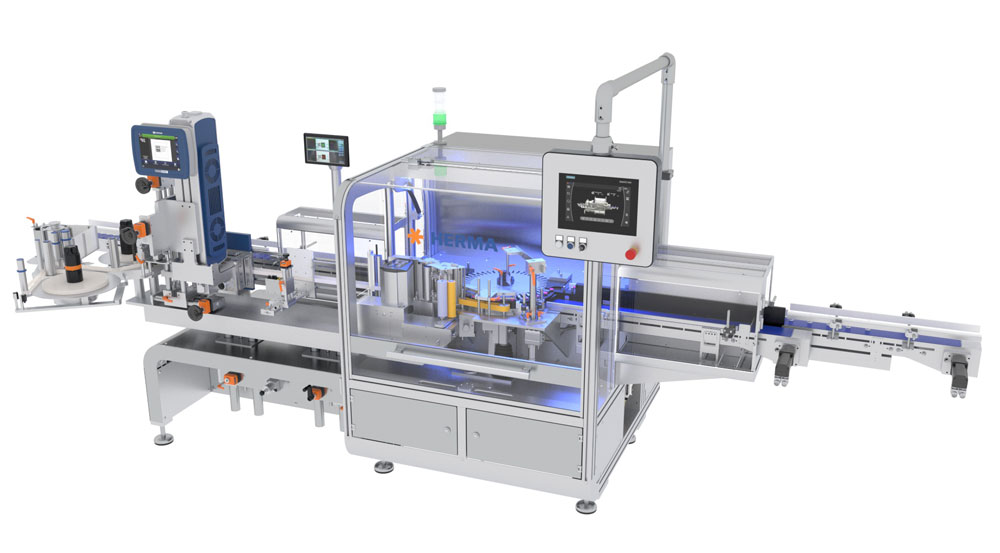
- Product Authentication and Anti-Counterfeiting: RFID tags can be embedded in product labels, providing a unique identifier for each item, helping to authenticate products and prevent counterfeiting by verifying the authenticity of each tagged item throughout the supply chain.
- Inventory Management: RFID-enabled labeling machines can attach RFID tags to products or packaging to track inventory levels in real-time. RFID tags enable automated data capture, reducing the need for manual inventory counts and providing accurate and up-to-date inventory information.
- Supply Chain Visibility: Through RFID tags on products, the movement of each item in the supply chain can be tracked, enabling enterprises to monitor the flow of goods, identify bottlenecks and optimize logistics processes.
- Asset Tracking: RFID tags applied by labeling machines can be used for asset tracking, whether in a warehouse, manufacturing plant, or healthcare environment. RFID technology provides an efficient way to locate and manage assets, reduce losses and increase asset utilization.
- Batch Traceability: RFID tags can store detailed information about product batches, enabling simple and accurate traceability. Product recalls and quality control is critical in the pharmaceutical and food production industries.
- Automated Check-In/Checkout: In library systems, hospitals, or rental services, RFID tags on items can facilitate automated check-in and checkout processes, reducing queues and improving the overall customer experience.
- Work-in-Process (WIP) Tracking: In manufacturing, RFID tags applied at different stages of production can track WIP in real-time, helping to monitor production status and optimize workflow.
- Access Control and Security: RFID tags can be used in access control systems to allow authorized personnel to enter restricted areas or facilities.
- Healthcare Applications: RFID tags on medical devices, patient wristbands, or drug packaging enable accurate tracking, improving patient safety, efficient medical supply management, and reducing medical errors.
- Retail and Point of Sale (POS): RFID tags for retail products enable a faster and more accurate checkout process. The technology facilitates inventory management, ensuring products are replenished when needed.
Conclusion
RFID labeling machine has become an important tool for industries looking to implement RFID technology for inventory management, logistics optimization, and supply chain visibility. RFID technology provides enhanced security features that make RFID tags difficult to counterfeit or tamper with. RFID labeling machine can efficiently and accurately automatically apply RFID tags to products, adding an extra layer of protection to products, preventing product counterfeiting and unauthorized access to sensitive information, and are indispensable assets in modern manufacturing and distribution processes.
